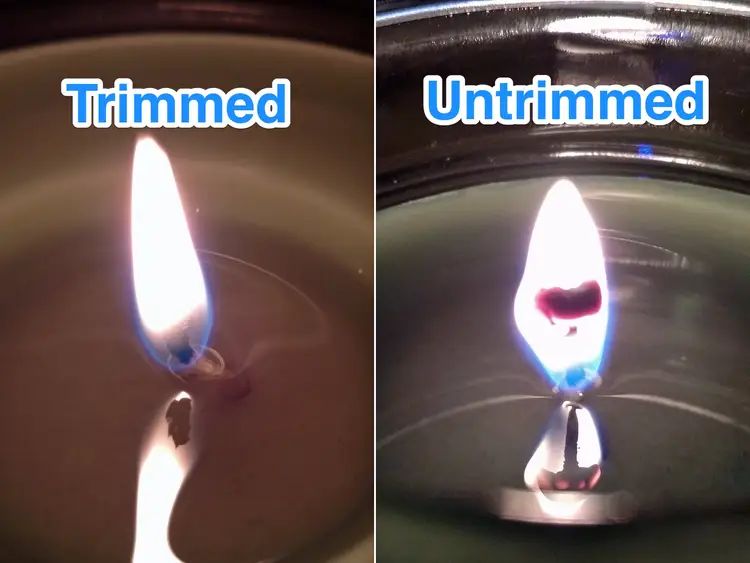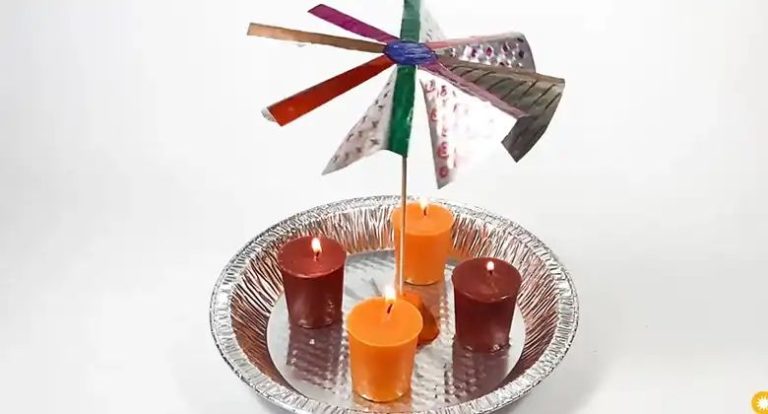Are Aluminum Tins Safe For Candles?
Aluminum tins are metallic containers made from aluminum metal that are commonly used to hold candles. These tins come in various shapes and sizes, and often have a screw-on or friction fit lid. Aluminum is appreciated for candle containers because it is affordable, conducts heat well, and can be formed into attractive designs.
Candlemakers frequently choose aluminum tins because they are lightweight and portable. The metal construction also provides a protective housing for the candle, especially during travel. Many popular candle container styles like tubes, jars, and votives can be made from aluminum. The material allows for custom branding by printing directly on the tin’s surface.
Pros of Using Aluminum Tins
Aluminum tins offer several advantages as candle containers. First, aluminum tins are a low-cost option for candle making. New candle makers can purchase inexpensive bulk quantities of aluminum tins from suppliers to get started with candle production on a budget according to this source. Tins are also readily available from craft stores and online retailers, making aluminum tins an accessible container choice.
Additionally, aluminum is lightweight, durable, and conducts heat efficiently. The thin metal material allows candles to melt smoothly and evenly. Aluminum tins are easy to work with for candle wicks and labels. Overall, aluminum candle tins offer an affordable, convenient container option.
Cons of Using Aluminum Tins
While aluminum tins have some benefits, there are also some potential drawbacks to be aware of when using them for candles:
One concern is the potential for off-gassing. Some research indicates that aluminum may off-gas small amounts of metal vapors when heated to high temperatures, such as those generated by a burning candle. While more research is still needed, some recommend avoiding aluminum containers if using essential oils in candles, as the oils can react with the metal (https://www.flytinbottle.com/blog/candle-tins-vs-candle-jars/).
Additionally, aluminum is a highly conductive metal. This means it absorbs heat readily. If not careful, an aluminum tin could overheat while a candle is burning inside, posing a potential fire hazard (https://metaltinpack.com/candle-container-materials/). Thinner aluminum tins may be more prone to this issue versus thicker, more durable tins.
Aluminum tins can also easily become dented, scratched or misshapen with rough handling. This could negatively impact the appearance of the candle container over time.
While these cons should be kept in mind, following proper safety precautions can help mitigate the risks. Choosing a thicker gauge aluminum, allowing for adequate airflow, and monitoring candle temps can make aluminum a safe option in many cases.
Research on Aluminum Tin Safety
Multiple scientific studies have been conducted evaluating the safety of aluminum tins for candles. Key areas of research have focused on off-gassing and melting points.
Off-gassing refers to the release of volatile organic compounds (VOCs) from materials when heated. According to a study by the Candle Association of America, aluminum tins do not off-gas any concerning levels of VOCs when used with standard candle waxes like paraffin at normal burning temperatures (135-185°F) (https://candles.org/faqs/). The levels detected were extremely low and not considered a health hazard.
Research has also analyzed the melting points of aluminum tins. Since the melting point of aluminum is around 1,220°F, there is a large safety margin when using aluminum tins with standard candle waxes that burn at much lower temperatures. As long as the candle’s flame remains low and does not drastically exceed 185°F, the tin should remain stable and retain its shape.
Overall, when used properly with the right wick and wax for the tin’s dimensions, scientific studies have found aluminum to be a safe metal choice for candle containers. However, it’s still important to follow proper candle safety guidelines.
Best Practices for Use
When using aluminum tins for candles, there are some best practices to follow for optimal safety and performance:
Select the proper wick size. The wick must be wide enough to allow the wax to melt at the edges, but not so wide that it creates excessive smoke or sooting. Testing different wick widths with the specific wax, fragrance, and vessel is recommended. According to candle making experts, a good starting point is to choose a wick approximately 1/3 the diameter of the candle tin (source).

Leave adequate headspace. Candles expand and contract as they are heated and cooled. Leaving 1/4 to 1/2 inch of space below the rim allows room for this expansion. If filled too high, wax can spill over the edges and pose a fire hazard (source).
Trim the wick to 1/4 inch before each lighting to prevent excess smoke. Long wicks create more carbon buildup.
Allow the wax pool to form completely across the surface before extinguishing. This helps prevent tunneling.
Never burn a candle for more than 4 hours at a time. Longer burn times can cause overheating.
Alternatives to Aluminum Tins
While aluminum tins are a popular choice for candles, there are other container options to consider that may be safer and more environmentally friendly:
Glass
Glass containers like mason jars and votives are excellent candle vessels. Glass allows the candle wax to be visible and adds an attractive, rustic element. Glass is also safer than metal when it comes to flammability. Make sure to use heat-resistant glass specifically manufactured for candles. According to this source, glass containers are usually more expensive than metal but allow for visually appealing designs.
Other Metals
Tins made from stainless steel, tin, or copper can provide metallic candle vessels without the risks of aluminum. Stainless steel is durable, affordable, and safer for candle making. Pure tin also offers a rust-resistant alternative. Copper has excellent heat conductivity. Avoid galvanized steel, which can release hazardous fumes when heated.
Silicone
Silicone is a non-flammable material that repels heat. Silicone candle molds and containers do not conduct heat as quickly as metal, lowering fire risks. They clean up easily and allow for unique pillar candle shapes and embeds. The downside is that silicone vessels tend to be smaller and more expensive.
Guidelines for Safe Use
When using aluminum tins for candles, it’s important to follow proper safety guidelines to reduce risks. Here are some tips for safe aluminum tin candle usage:
Monitor candles closely anytime they are burning. Never leave the room or go to sleep with a candle lit in an aluminum tin. Be prepared to extinguish the flame if needed.
Place candles on a heat-safe surface away from anything flammable. Allow adequate space around the tin, at least 12 inches. Avoid putting candles near curtains, papers, plants, or furniture.
Extinguish candles before the wax pool reaches the very edge of the tin. The closer the flame gets to the metal edges, the hotter those areas become. Allowing wax to fully melt out to the rim can pose a risk.
Consider tin sizes – larger and deeper tins are safer than shallow, small tins where heat is more concentrated. Aim for at least a 3-4 inch depth and diameter over 3 inches.
Avoid drafts or frequently opening windows which can cause quick, uneven burning and excessive hot spots. Be very cautious using candles during power outages when air circulation changes.
Inspect tins before and after each use – discard any tins with damage, warping, or corrosion which can weaken the metal over time.
Addressing Safety Concerns
Some concerns about aluminum candle tins relate to overheating. As the candle burns, the metal tin absorbs heat. Larger candles in confined tins can cause the metal to become extremely hot, posing burn risks and potential fire hazards if left unattended (https://www.ucanpackaging.com/blog/everything-you-need-to-know-about-candle-tins). To prevent overheating issues with aluminum candle tins:
- Use appropriate tin sizing – Make sure the candle tin is adequately sized for the candle. The flame should not reach the sides of the tin as it burns. Allow 1-2 inches clearance between the candle and tin walls.
- Avoid large candles in small tins – Putting a heavy wax or large diameter candle in a small tin increases overheating risks. Limit large candles to tins over 3 inches wide.
- Use metals designed for candles – Copper, iron, and stainless steel tins conduct heat better than aluminum. Opt for these metals if overheating is a top concern.
- Add ventilation holes – Small holes punched in the tin sides allow airflow and dissipate heat. But don’t add so many holes as to compromise the candle structure.
- Trim wicks to proper height – Long wicks create a larger flame and more heat. Keep wicks trimmed to 1⁄4 inch length to minimize the heat produced.
- Avoid drafts – Placing candle tins near vents or open windows can make flames unstable, causing guttering, tunneling, or overheating issues.
With proper tin sizing, ventilation, wick trimming, and protected placement, aluminum candle tins can burn safely. Monitor candles when lit, follow manufacturer guidelines, and extinguish before the wax pool reaches the tin edges.
Recycling and Disposal
Proper disposal of aluminum tin candles is important from both an environmental and safety perspective. The metal tins can often be recycled, while the wax should be thrown away.
According to Napa Recycling (https://naparecycling.com/guide/candles/), candle wax is not recyclable. Any remaining wax should be removed from the tin and discarded before recycling. The tin can then be placed in your recycling bin. Trader Joe’s candle tins are also reported to be recyclable once the wax is removed (https://www.reddit.com/r/traderjoes/comments/es212t/anyone_know_if_the_candle_tins_are_recyclable/).
To safely remove wax, allow the candle to burn completely or melt the remaining wax by placing the tin in hot water. Once emptied, place the tin in your recycling bin. The wax can go in the trash once cooled and hardened.
Properly disposing of used candle tins keeps them out of landfills and allows the metal to be reused. Recycling aluminum also requires far less energy than creating new metal from raw materials.
Conclusion
In summary, aluminum tins can be safely used for candles if certain precautions are taken. Aluminum is an effective heat conductor which helps disperse heat, reducing the risk of fire. However, aluminum is also soft and thin, so it can melt from the heat of a candle flame if not properly managed. Using a candle holder, allowing adequate clearance above the flame, avoiding drafts, and monitoring candle use can mitigate risks with aluminum tins.
High-quality, purpose-made candle containers are recommended for safest results. But aluminum tins can work if handled carefully. For best practices, use an appropriate holder, trim wicks to 1⁄4 inch, leave 1-2 inch clearance above flame, avoid drafts, don’t burn for over 4 hours, and directly supervise while lit. With safety measures in place, aluminum tins can be an inexpensive, recyclable option for candle making.
In the end, every candle comes with some risk. But being informed of proper procedures and using caution with materials can allow aluminum tins to be utilized responsibly. Do your own experiments and tests beforehand. With vigilance and common sense, aluminum tins can serve as creative, recyclable containers for candle enthusiasts.


